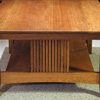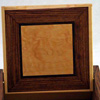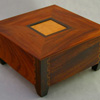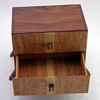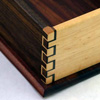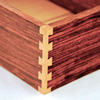The instructions provided on this website are not always detailed enough and are "my way" of doing things. Ask 10 different boat builders or woodworkers how to do 1 thing and you'll get 10 different answers.
!Website Retirement!
I make no income from this site, in fact it costs me a little to run it! I originally created this website when I built my first wooden boat, the website code is now 13 years old, and will require a complete rewrite to continue funtioning properly. With only 25 average daily page views, I feel that the website would not really be missed. If you wish to see this website continue please send an email to me at jim.kubik@jkwoodstudio.com.
Finishing
Finishing is a long involved process which requires many steps that are hard to see in photographs. This type of finishing will produce a high quality, professional looking finish, on Lake Skiffs or Pirogues. Each part of the finishing process is explained below with a link to the relevant page.
Fairing - the surface of the wood is leveled by setting all nails (driving them just below the surface with a nail punch), then filling all set nails, imperfections and low spots with epoxy (see Materials & Cutlist) mixed with 407 low density fairing filler. The surface is then sanded smooth. This process is repeated as many times as needed. Additional fairing is also done when applying primer.
Barrier Coating (West System Marine Epoxy) - the hull is made to resist water (moisture absorption) by applying 3 or more coats of epoxy (see Materials & Cutlist). There are 2 methods of applying multiple coats of epoxy explained below. I highly recommend the 2nd method since sanding epoxy is very time consuming and very hard.
Method 1
Apply one coat at a time allowing the epoxy to cure enough to sand (8 -12 hours depending on the temperature and hardener used). If the epoxy is allowed to cure, then it must be sanded with 80 grit sandpaper before any additional coats are applied. If not sanded with the proper grit sandpaper the next coat may not adhere properly.
Method 2
Apply multiple coats one after another, making sure the previous coat has cured firmly enough to support the weight of the next coat (~30 - 90 minutes depending on tempature and hardener used). To avoid sanding between coats (I recommend 4 - 6 coats), apply all of the coats in the same day. This method is commonly called hot-coating and will save a lot of sanding time.
Priming - all surfaces must be prepared with primer (2 - 5 coats) before applying finish paint. White primer is used on surfaces that will be painted with light colors such as white, and gray primer is used on surfaces that will be painted with dark colors. Final fairing is also done at this time. Final finish paint only looks as good as the primer under it, so this is a very important step.
Painting - finish paint (2 to 7 coats) is applied, more sanding between each coat.
Varnishing - Varnish (6 to 10 coats) is applied to all brightwork (exposed wood), more sanding between coats. Gloss varnish provides UV protection to the wood as well as the epoxy coating. Without UV protection the epoxy coating would yellow and the wood color would fade with exposure to direct sunlight.

